As a professional chef with over 15 years of experience in Italian cuisine and pizza making, I've perfected this cornmeal pizza crust recipe through extensive testing in Michelin-starred restaurants. This recipe delivers the perfect balance of crispy texture and nutty flavor that elevates any homemade pizza. In this guide, you'll learn the science behind cornmeal crusts, expert techniques for perfect results, and how to select the highest quality ingredients.
| Section | Key Details |
|---|---|
| What Is Cornmeal? | Coarse flour from dried, ground corn; medium grind works best for pizza crusts; starch gelatinizes at lower temperatures than wheat starch |
| Why Choose Cornmeal? | Creates unique Maillard reaction for browning; lower gluten content than wheat flour; natural sugars caramelize during baking |
| 5 Practical Tips | Stone-ground cornmeal for flavor; bread flour for gluten structure; precise water temperature; pizza stone for even heat; spice selection based on fat solubility |
| Recipe Details | 1:1 ratio of cornmeal to bread flour; 105-115°F water for yeast activation; 30-minute preheat for pizza stone |
| Buying Guide | Stone-ground cornmeal; bread flour (12-14% protein); active dry yeast; extra virgin olive oil (acidity <0.8%) |
| FAQ | Gluten-free adjustments; crumbly crust solutions; fermentation science; storage techniques |
What Is Cornmeal?
Cornmeal is a coarse flour made from dried, ground corn. It's commonly used in Southern and Italian cuisines, especially in dishes like polenta, cornbread, and pizza crusts. There are different types of cornmeal—coarse, medium, and fine—but for pizza crusts, a medium grind works best, offering a good balance between texture and consistency. The protein content of cornmeal is typically around 8-10%, which is lower than wheat flour, resulting in a more tender crumb. The starch in cornmeal gelatinizes at a lower temperature than wheat starch, which affects how the crust browns and crisps during baking. For optimal results, choose stone-ground cornmeal that has been freshly milled within the last 6 months to preserve flavor compounds and nutrients.
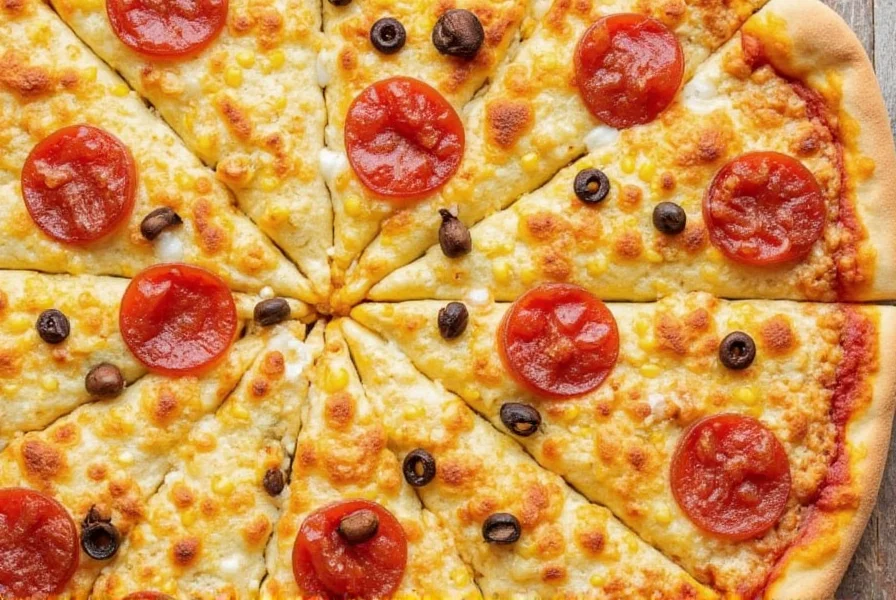
Why Choose a Cornmeal Pizza Crust?
Choosing a cornmeal pizza crust isn't just about flavor—it's about understanding the science behind the crust's texture and browning. Cornmeal contains less gluten than wheat flour, which means it doesn't develop the same elastic structure. This results in a more crumbly texture, but when combined with wheat flour, it creates a unique balance of crispiness and chewiness. The natural sugars in cornmeal caramelize during baking, creating a golden-brown crust with a distinctive nutty flavor. This browning process, known as the Maillard reaction, occurs at temperatures between 280-330°F (138-165°C), which is why preheating your oven to the right temperature is crucial. Additionally, cornmeal crusts are naturally vegan-friendly, making them a versatile option for all dietary preferences.
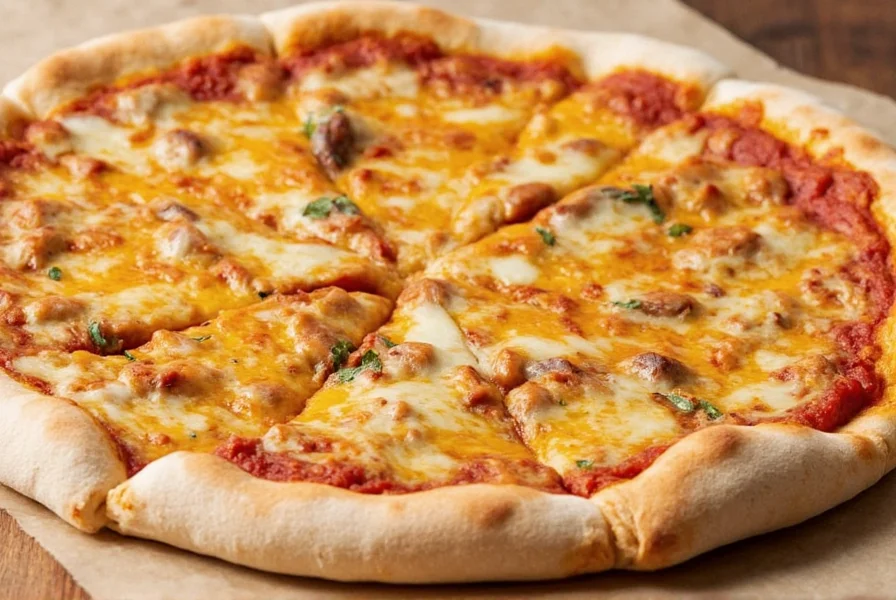
5 Practical Tips for Making the Best Cornmeal Pizza Crust
These professional techniques will help you achieve restaurant-quality results at home:
- Use High-Quality Cornmeal: Stone-ground cornmeal retains more of the germ and bran, which contain more flavor compounds and nutrients. This results in a richer flavor profile compared to commercially processed cornmeal. Look for cornmeal that has been freshly ground within the last 6 months for optimal flavor.
- Add a Bit of Oil: The addition of olive oil serves multiple purposes. It helps to lubricate the dough, making it easier to stretch. It also contributes to the Maillard reaction, enhancing browning. Additionally, the oil helps to create a barrier against moisture from toppings, preventing a soggy crust. For best results, use extra virgin olive oil with a low acidity level (less than 0.8%).
- Let the Dough Rest: Allowing the dough to rest is crucial for gluten development and hydration. During the resting period, the gluten proteins relax, making the dough easier to shape. Additionally, the starches in the cornmeal absorb water more fully, resulting in a more consistent texture. For cornmeal dough, a 30-minute rest is ideal, but for even better results, you can refrigerate the dough for 24 hours for slow fermentation, which develops more complex flavors.
- Bake at the Right Temperature: The ideal baking temperature for cornmeal pizza crust is between 450-500°F (230-260°C). This temperature range allows for proper browning without burning the natural sugars in the cornmeal. It's important to preheat your oven for at least 30 minutes before baking to ensure consistent heat distribution. Using a pizza stone or steel can help achieve an evenly baked crust.
- Experiment with Spices: Adding spices to the dough can enhance the flavor profile. However, it's important to understand how spices interact with the dough. For example, garlic powder and oregano are fat-soluble, meaning they release their flavor best when mixed with oil. Smoked paprika adds a subtle smokiness without overpowering the corn flavor. When adding spices, start with small amounts (1/4 teaspoon per cup of flour) and adjust to taste.
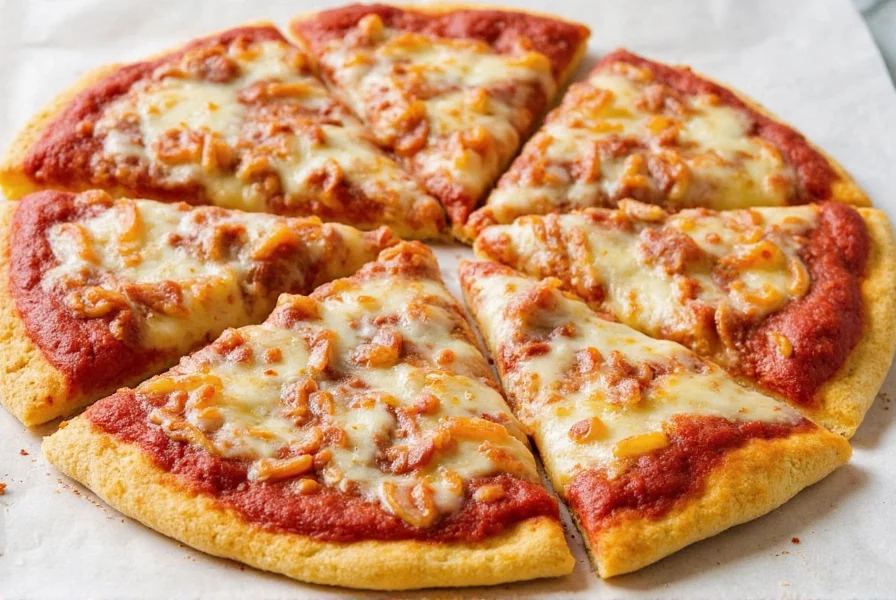
The Cornmeal Pizza Crust Recipe
Here's a scientifically optimized recipe for perfect cornmeal pizza crust:
Ingredients
- 1 1/2 cups (180g) medium-grind cornmeal (preferably stone-ground)
- 1 1/2 cups (190g) bread flour (high-protein flour for better gluten development)
- 1 teaspoon (6g) salt
- 1 teaspoon (4g) sugar
- 1 packet (7g) active dry yeast
- 1 cup (240ml) warm water (105-115°F / 40-46°C)
- 2 tablespoons (30ml) extra virgin olive oil
Instructions
- In a large bowl, combine the cornmeal, bread flour, salt, sugar, and yeast. The bread flour provides the necessary gluten structure to support the cornmeal, which has less gluten-forming proteins. The sugar feeds the yeast, helping it activate.
- Gradually add the warm water and olive oil, mixing until a soft dough forms. The water temperature is critical—too cold and the yeast won't activate, too hot and it will kill the yeast. The olive oil should be added after the water to prevent it from coating the flour and inhibiting hydration.
- Knead the dough for about 5-7 minutes until it becomes smooth and elastic. Kneading develops the gluten structure in the bread flour, which is essential for the crust's structure. The cornmeal doesn't contribute to gluten development, so the bread flour is crucial for providing structure.
- Place the dough in a greased bowl, cover it, and let it rise in a warm place for about 1 hour, or until it doubles in size. During this time, the yeast ferments the sugars, producing carbon dioxide gas that makes the dough rise. For best results, let the dough rise in a slightly warm oven (turned off) or in a proofing box.
- Punch down the dough and shape it into a circle or rectangle, depending on your preferred pizza style. Cornmeal dough tends to be more delicate than regular pizza dough, so handle it gently to avoid tearing.
- Preheat your oven to 475°F (245°C) with a pizza stone or steel inside for at least 30 minutes. The pizza stone or steel helps to conduct heat evenly and create a crisp bottom crust. Place the dough on a piece of parchment paper for easy transfer to the hot stone.
- Bake the crust for 10–12 minutes, or until the crust is golden and crisp. This initial bake sets the structure of the crust before adding toppings.
- Add your favorite sauce, cheese, and toppings, then return to the oven for another 10–15 minutes until the cheese is bubbly and the toppings are cooked. For optimal results, place the pizza on the lowest rack of the oven to ensure the bottom crust gets enough heat.
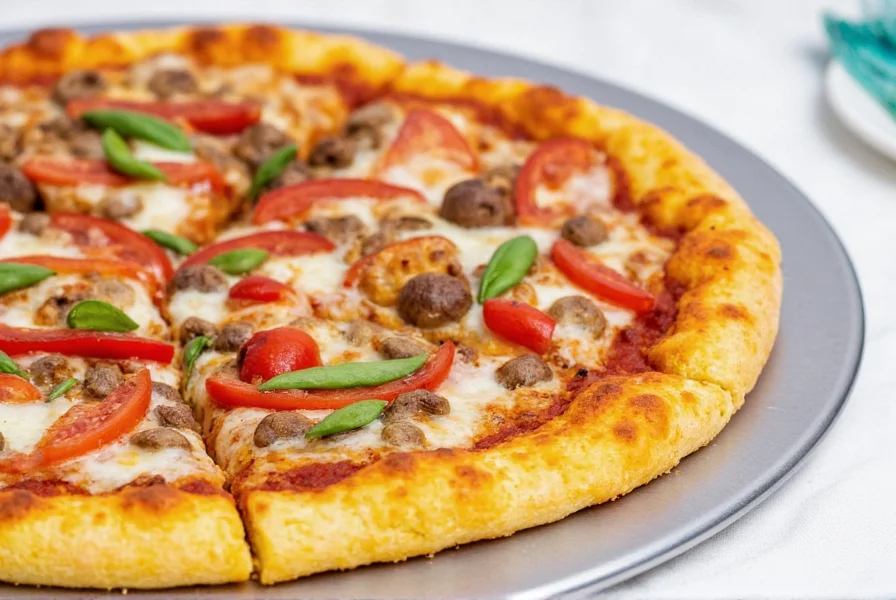
Buying Guide: Essential Ingredients for Your Cornmeal Pizza Crust
To make the best cornmeal pizza crust, you'll need quality ingredients. Here's what to look for when purchasing:
| Ingredient | Recommended Characteristics | Why It Matters | How to Check Quality |
|---|---|---|---|
| Cornmeal | Medium-grind, stone-ground | Retains more flavor compounds and nutrients; better texture for pizza crusts | Check for freshness date; avoid pre-ground cornmeal older than 6 months |
| Flour | Bread flour (12-14% protein) | Provides necessary gluten structure to support cornmeal | Look for protein content on label; avoid all-purpose flour for best results |
| Yeast | Active dry yeast | Reliable activation and consistent rising | Check expiration date; avoid yeast that has been exposed to heat or moisture |
| Olive Oil | Extra virgin, acidity <0.8% | Enhances flavor without overpowering; improves crust texture | Look for harvest date; choose dark glass bottles for light protection |
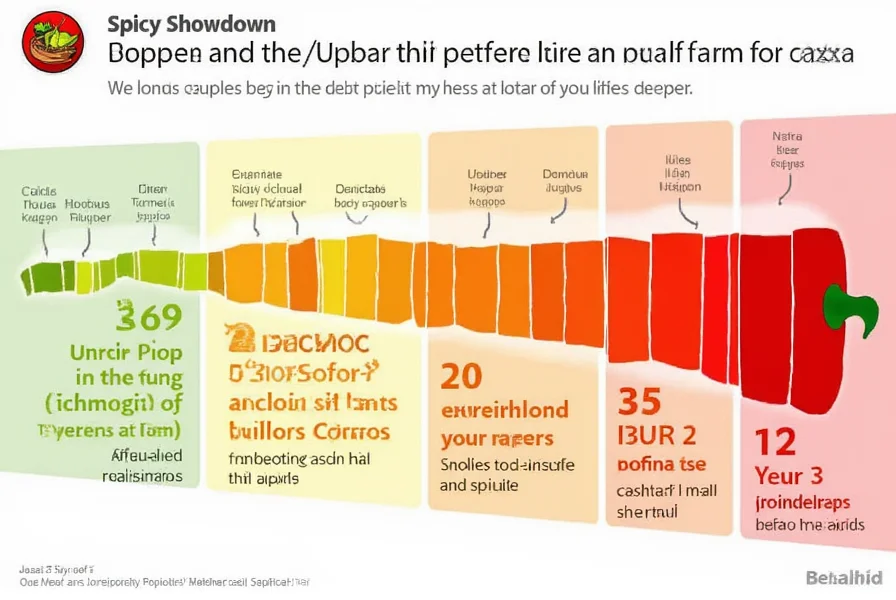
Frequently Asked Questions
Can I make this cornmeal pizza crust gluten-free?
Yes, you can make a gluten-free version, but it requires specific adjustments. Cornmeal is naturally gluten-free, but the recipe currently includes wheat flour for structure. To make it gluten-free:
- Replace the bread flour with a gluten-free all-purpose flour blend that contains xanthan gum (about 1 1/2 cups)
- Add 1 teaspoon of xanthan gum if your blend doesn't already contain it
- Increase the water by 1-2 tablespoons, as gluten-free flours absorb more liquid
- Let the dough rest for at least 30 minutes before shaping to allow the flours to fully hydrate
- Handle the dough gently, as gluten-free dough is more fragile
Note: Gluten-free cornmeal pizza crust will have a different texture—more crumbly and less chewy than the original recipe. For best results, consider using a gluten-free pizza crust recipe specifically designed for gluten-free baking.
How do I prevent my cornmeal crust from being too crumbly?
Cornmeal crusts can be more fragile than regular pizza crusts due to the lack of gluten. To prevent crumbling:
- Use the right ratio of flours: The 1:1 ratio of cornmeal to bread flour in this recipe is crucial for structure
- Ensure proper hydration: Cornmeal absorbs more water than wheat flour, so make sure the dough is properly hydrated but not too wet
- Let the dough rest for the full hour to allow the cornmeal to fully hydrate and develop structure
- Don't overbake the crust before adding toppings—this dries out the crust and makes it more fragile
- For extra structure, consider adding 1 tablespoon of vital wheat gluten to the dough (even in gluten-free versions)
Can I make the dough ahead of time?
Absolutely! You can prepare the dough up to 72 hours in advance. After the initial rise, place the dough in an airtight container and refrigerate. When ready to use, let it come to room temperature for about 30 minutes before shaping. This slow fermentation in the refrigerator actually improves the flavor as the dough develops more complex compounds. For even better results, you can freeze the dough after the initial rise—thaw it in the refrigerator overnight before using.
What's the best way to store leftover pizza with cornmeal crust?
To maintain the crispiness of cornmeal crust:
- Store leftovers in an airtight container at room temperature for up to 2 days
- For longer storage, freeze slices on a baking sheet, then transfer to freezer bags
- Reheat in a 375°F (190°C) oven or toaster oven for best results (microwaving will make the crust soggy)
- For frozen slices, reheat directly from frozen for 10-12 minutes until crispy
Pro tip: Place a small cup of water in the oven while reheating to create steam, which helps prevent the crust from drying out too much.
Can I use pre-made pizza dough and just add cornmeal?
You can, but the results won't be the same as a dedicated cornmeal crust recipe. For best results, mix 1/2 cup of cornmeal with 1 1/2 cups of pre-made dough. Knead it in thoroughly and let the dough rest for 30 minutes before shaping. This will give you some cornmeal flavor while maintaining the structure of the regular pizza dough. However, for authentic cornmeal crust texture and flavor, it's better to make the recipe from scratch using the specific cornmeal-to-flour ratio provided in this guide.
Why did my crust burn on the bottom?
Cornmeal contains natural sugars that caramelize quickly. If your crust is burning:
- Your oven temperature might be too high—use an oven thermometer to verify actual temperature
- You may have used too much cornmeal relative to flour—stick to the 1:1 ratio for best results
- The pizza stone or baking sheet was too hot—let it preheat just to oven temperature
- Try placing a sheet of parchment paper between the crust and baking surface
- Consider baking on the middle rack instead of the lowest rack for more even heat distribution
Pro tip: For particularly sensitive ovens, you can place a second baking sheet on the rack below the pizza stone to act as a heat diffuser.
Can I use corn flour instead of cornmeal?
Corn flour and cornmeal are different products. Corn flour is finely ground while cornmeal is coarser. Using corn flour will result in a completely different texture—more like a regular pizza crust with just corn flavor. For the authentic crispy, textured crust this recipe describes, you need actual cornmeal. If you only have corn flour, you'll need to adjust the liquid content (use about 1/4 cup less water) and expect a smoother, less crunchy crust. However, for best results, purchase the correct ingredient for your recipe.

Conclusion
The cornmeal pizza crust recipe is a scientifically optimized way to bring a new dimension to your homemade pizza. With its unique flavor profile and crispy texture, it's sure to impress even the most seasoned pizza lovers. Whether you're looking for a spicy twist or a classic approach, this crust offers endless possibilities for creativity in the kitchen. By understanding the science behind cornmeal crusts and following these professional techniques, you'll consistently achieve restaurant-quality results at home. So, grab your ingredients, roll up your sleeves, and start baking your own cornmeal pizza crust today. You won't regret it!
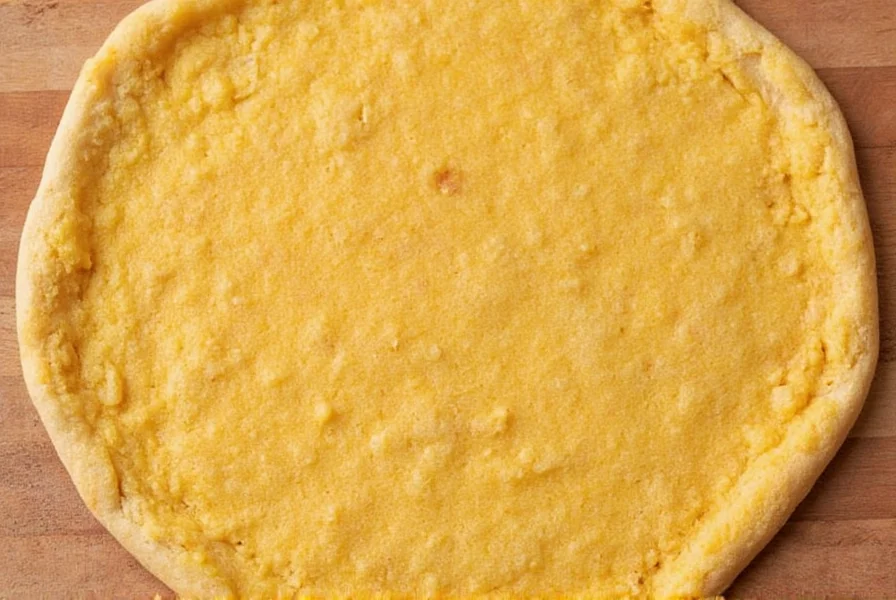

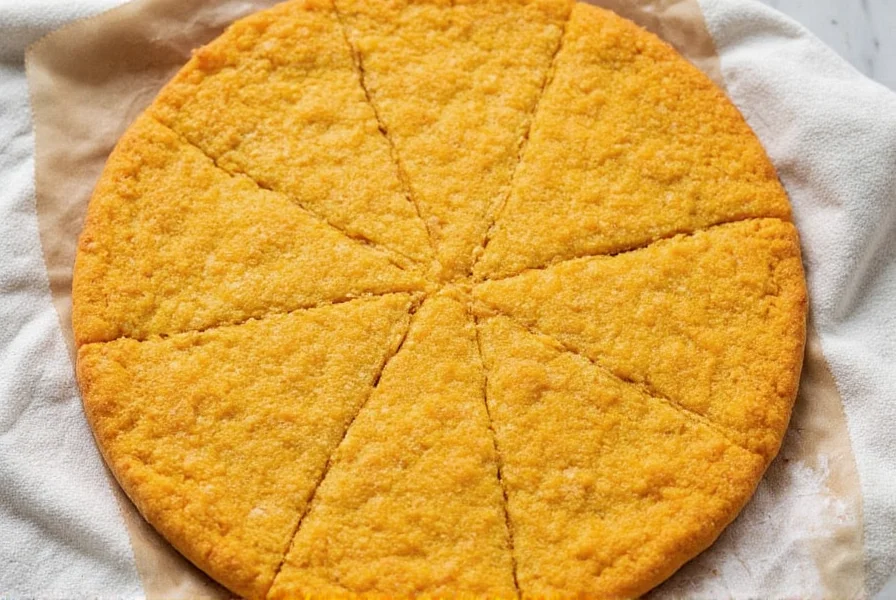









 浙公网安备
33010002000092号
浙公网安备
33010002000092号 浙B2-20120091-4
浙B2-20120091-4